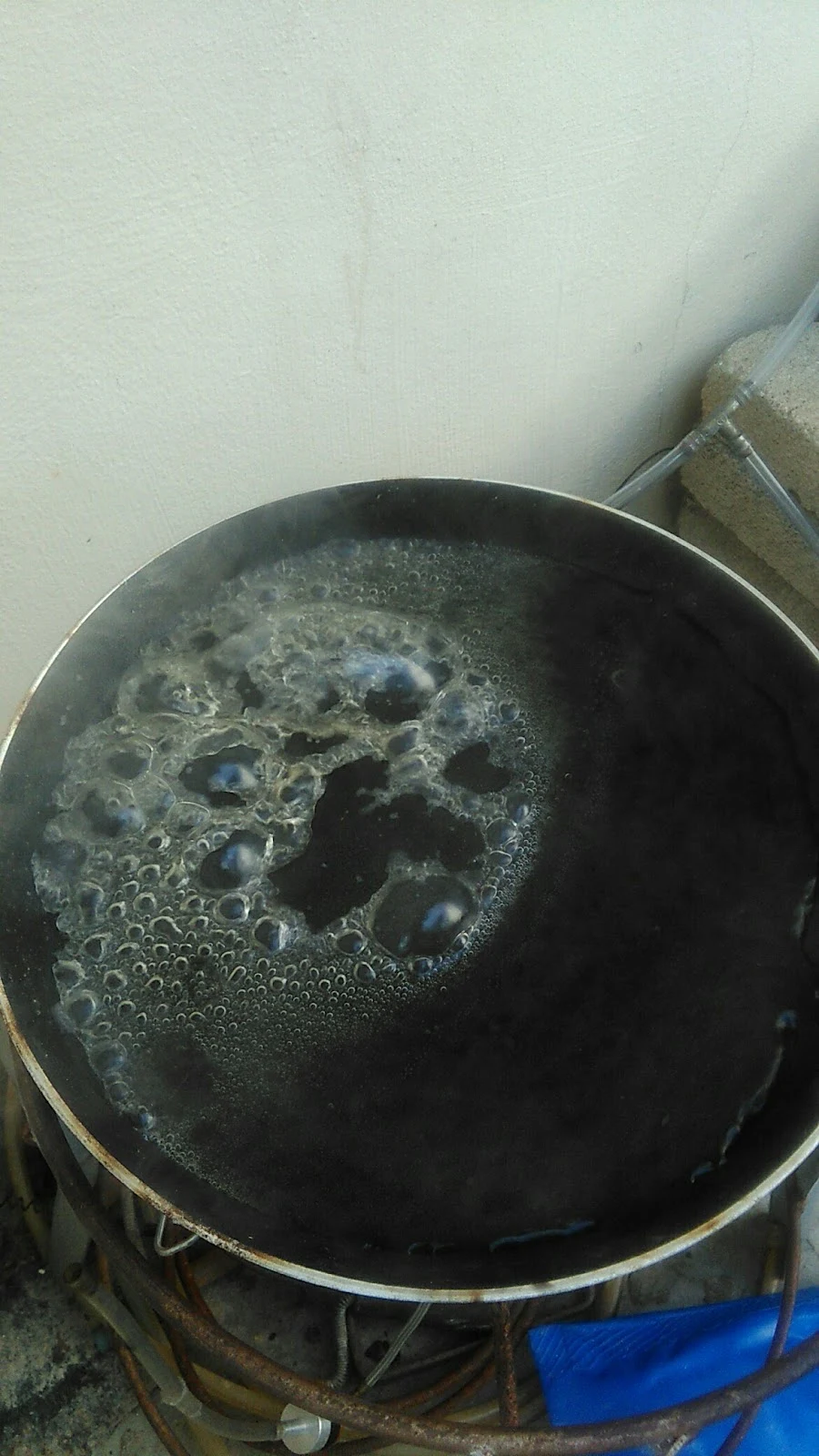The system consist of two components:
1. The floating drum that has inlet and outlet for biogas. Inlet will let the biogas into the drum to be stored. Outlet is to let the biogas out when it is needed so should there be valve installed to control the process.
2. The base drum that contained water act as a platform for upper drum to float when there is gas produced. A steel guide installed to make sure the floating drum won't fall to the side.
So both drums are of different volume
a. floating drum is 160 liter
b. base drum is 200 liter
source: Biogas DIY FB Group













